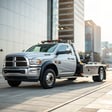Finding affordable roofing solutions can be challenging for seniors on fixed incomes. Fortunately, several programs offer help.
Senior Roofing Aid: Understanding Your Options in 2025
For many older Americans, maintaining a safe and secure home becomes increasingly difficult with age. A leaking or damaged roof not only threatens the structural integrity of your house but can also create serious health and safety hazards. Recognizing this critical need, various government agencies, non-profit organizations, and private entities have established roofing assistance programs specifically designed for seniors.
"Many seniors don't realize there are dedicated programs that can help them repair or replace their roofs at little to no cost," explains Maria Gonzalez, housing coordinator at the National Council on Aging. "These programs exist specifically to help older adults remain safely in their homes."
Weatherization Assistance Program: Energy-Efficient Roofing Solutions
The Weatherization Assistance Program (WAP) represents one of the most comprehensive home repair programs 2025 has to offer for qualifying seniors. This federally-funded initiative focuses on improving energy efficiency while enhancing home safety.
According to the Minnesota Department of Commerce, weatherization services can decrease annual energy costs by up to 30 percent. While the program primarily addresses insulation and heating systems, roof repairs often qualify when they affect energy efficiency.
Eligibility typically depends on income level. Priority is generally given to:
- Seniors over 60
- Families with children
- Persons with disabilities
The application process varies by state, but you can typically begin by contacting your local Community Action Agency.
USDA Single Family Housing Repair Program: Rural Roofing Help
For seniors living in rural areas, the USDA's Single Family Housing Repair Loans & Grants program (also known as Section 504) provides valuable roof replacement help. This program offers two options:
- Low-interest loans for very-low-income homeowners
- Outright grants for elderly very-low-income homeowners
To qualify for roofing aid through this program, applicants must:
- Own and occupy the home
- Be unable to obtain affordable credit elsewhere
- Have a family income below 50% of the area median
- For grants: be 62 years or older and unable to repay a loan
The maximum loan amount is $40,000, while grants cap at $10,000. In some cases, seniors can receive a combination of both.
Free Roofing Program Options Through State Initiatives
Many states have developed their own senior home improvement programs that include roofing assistance. Washington State's Weatherization Program, for example, offers cost-effective energy efficiency improvements for low-income homeowners and renters, which often includes roof repairs when they impact energy conservation.
The New Jersey Division of Aging Services provides a comprehensive 2025 Program Guide outlining various assistance options for seniors, creating a single access point regardless of Medicaid eligibility.
How Do I Qualify for Roofing Aid as a Senior?
Qualifying for senior roofing aid typically depends on several factors:
- Age: Most programs require applicants to be at least 60-65 years old
- Income: Nearly all programs have income limits, often based on a percentage of the Area Median Income (AMI)
- Home ownership: Most programs require you to own and occupy your home
- Need: Priority is typically given to homes with safety hazards
The CARE/FERA Program in California provides an example of income guidelines, with upper limits ranging from $40,880 for 1-2 person households to $62,400 for a family of four (effective through May 31, 2025).
Senior Safety Home Considerations for Roofing Projects
When pursuing roofing grants for seniors, it's important to consider how the project will impact overall home safety. A quality roof replacement should address:
- Water intrusion that could lead to mold or structural damage
- Proper ventilation to prevent excessive heat buildup
- Fire-resistant materials where appropriate
- Adequate insulation for energy efficiency
"The goal isn't just to fix a leak," notes Robert Chen, a certified aging-in-place specialist. "It's about creating a comprehensive solution that enhances the senior's ability to remain safely in their home for years to come."
Non-Profit Roofing Assistance Programs
Beyond government initiatives, several non-profit organizations offer roofing assistance specifically for seniors:
- Rebuilding Together: This national organization has local affiliates that provide free home repairs, including roofing, to low-income seniors.
- Habitat for Humanity: While known for building new homes, many local chapters also offer repair services for existing homes.
- Local Area Agencies on Aging: These organizations often maintain lists of available resources and can help seniors navigate application processes.
Planning for Your 2025 Roof Replacement
If you're considering applying for roofing assistance in 2025, start preparing now:
- Gather documentation of your income and assets
- Obtain a professional assessment of your roof's condition
- Research programs available in your specific area
- Contact your local Area Agency on Aging for guidance
- Submit applications early, as many programs have limited funding
Disclaimer: This information is provided for educational purposes only and does not constitute financial or legal advice. Program availability, eligibility requirements, and funding levels may change. Contact the specific programs mentioned for the most current information regarding your situation.
By exploring these roofing programs for seniors, you can take important steps toward ensuring your home remains safe, comfortable, and affordable for years to come.
Tags

About Elena Schwarzkopf the Author
Elena Schwarzkopf is a seasoned finance writer with over a decade of experience in crafting actionable budgeting tips that help individuals regain control over their finances. Known for her practical approach, Elena's insights empower readers to transform their financial habits and achieve their savings goals.
Recommended Articles
How to Detect Macular Degeneration Early
Learn to detect macular degeneration early through eye exams and understanding symptoms, ensuring proactive eye health management.
Rent-to-Own Tow Trucks: What to Know in 2026
Explore rent-to-own tow trucks in 2026, offering flexibility for operators to gradually gain ownership while managing costs effectively.
How to Spot a Valuable Toy Before Selling It at a Garage Sale
Learn how to identify valuable toys to sell at garage sales, maximizing profit while decluttering your home. Find out what buyers are looking for!
5 Old Household Items That Are Suddenly Worth Money
Discover five old household items that could be worth a lot of money today, from vintage typewriters to collectible toys and more.
The Smart Rollator That’s Redefining Independence for Seniors
Smart rollators are revolutionizing senior mobility by integrating advanced technology, such as intelligent braking systems, GPS for location tracking, and health monitoring features, which improve safety and reduce healthcare costs through fall prevention. These devices, despite their higher upfront cost, offer long-term financial benefits by delaying the need for costly home care, and some insurance plans may cover the associated expenses.




